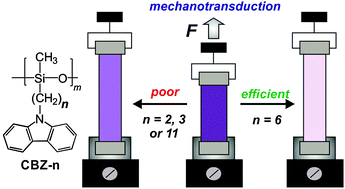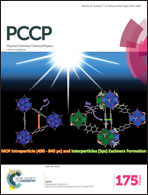Exploring optical mechanotransduction in fluorescent liquid crystal elastomers†
Abstract
Carbazole-based nematic liquid single crystal elastomers switch their fluorescence mechanically on demand enabling a fast optical mechanotransduction under ambient conditions. The identification of the key factors controlling such process is of utmost importance since it might lead to a significant improvement of the transducing abilities of these smart materials. In particular, variations in the length of the fluorophore flexible spacer translates in a distinct mutual interaction between both mesogenic and fluorogenic platforms, giving rise thereby to functional materials with a significantly different mechanofluorescent behaviour.


 Please wait while we load your content...
Please wait while we load your content...